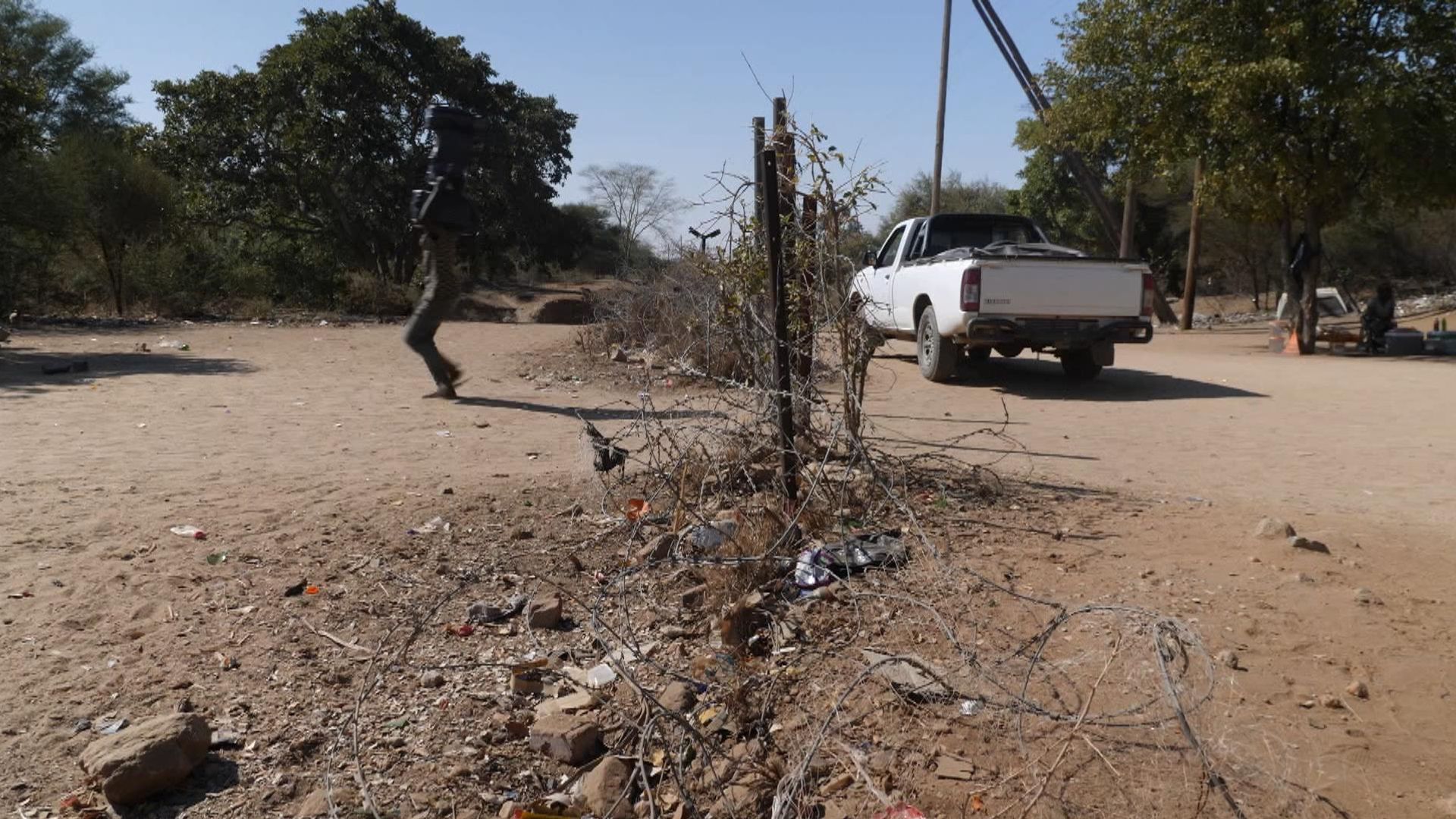Donkey karts loaded with wrapped parcels of unknown goods weave around the large puddles of water left in the dried riverbed.
Young men quickly hop over laid bricks to bridge the puddles followed by women treading carefully with babies on their backs.
The Limpopo River’s seasonal dryness is a natural pathway for those moving into South Africa from Zimbabwe illegally.
A sandy narrow beach undisturbed by border patrols with crossers chatting peacefully under trees on both banks as men furiously load and unload smuggled goods on the roadside.
Against the anti-immigration rage and xenophobia boiling over in South Africa’s urban centres, the tranquillity and ease of the border jumping is astonishingly calm.
“You can’t stop someone who is suffering. They have to find any means to come find food,” one man tells us anonymously as he crosses illegally.
At 55 years old, he remembers the 3,500-volt electric fence called the “snake of fire” installed here by the Apartheid regime.
This is Starmer’s year to prove he can deliver on small boats promise
Suspected people smugglers face travel bans and social media curbs under tightened laws
At least three people killed and 50 rescued off coast of France attempting to cross Channel
Hundreds of women and children escaping conflict in the late 1980s and early 1990s were electrocuted.
Read more
Olive branch for illegal miners in police stand-off
South Africa beauty queen citizenship row
Today, people fleeing drought and economic strife are smuggled across or walking through border blindspots like this one.
“Now, it’s easy,” he says. “There is no border authority here.”
He crosses regularly and always illegally. While he laughs at the lack of border agents, he says he has been stopped by soldiers in the past.
“They send us back but then the next day you try to come back and it is fine.”
We find a few soldiers on our way back to the main road. They look confused by our presence but unphased. It is hard to believe they are unaware of the streams of people and goods moving across the dried riverbed just a few hundred metres away.
Border ‘fence’ trampled and full of holes
We drive along the border fence to get to the official border post into Zimbabwe, Beitbridge.
Be the first to get Breaking News
Install the Sky News app for free
“Fence” is a generous term for the knee-height barbed wire laid across 25 miles of South Africa’s northern edges in 2020. Some sections are completely trampled, and others are gaping with holes.
The concrete fortress is a drastic change to the soft, sandy riverbed. Queues dismantle and reassemble as eager crowds rush from one building to another as instructions change.
Zimbabweans can live, work and study in South Africa on a Zimbabwean exemption permit, but many like Precious, a mother-of-three, cannot even afford a passport.
When we meet her at a women’s shelter in the border town of Musina, she says she only has $30 (£23.90) to find work in South Africa and that a passport costs $50 (£39.80).
“My husband is disabled and can’t work or do anything. I’m the only one doing everything – school, food, everything. I’m the one who has to take care of the kids and that situation makes me come here to find something,” she says tearfully before breaking down.
The shelter next door is home to trafficked children that were rescued. Other shelters are full of men looking for work.
Follow our channel and never miss an update.
Musina is a stagnant sanctuary for Zimbabweans searching for a better life who become paralysed here – a sign of the declining state of Zimbabwe and the growing hostility deeper in South Africa.
In Johannesburg, South Africa’s economic centre, illegal immigrants are facing raids and deportations organised by the Ministry of Home Affairs at the behest of popular discontent.
The heavy-handed escalation in the interior sits in stark contrast to the lax border control.
“I wonder how serious our government is about dealing with immigration,” says Nomzamo Zondo, human rights attorney and executive director of the Socio-Economic Rights Institute of South Africa (SERI), as we walk through Johannesburg’s derelict inner city.
“I think part of it is that the South Africa we want to build is one that wants to welcome its neighbours and doesn’t forget the people that welcomed us when we didn’t have a home – and that is why I think they are so poor at maintaining the borders.”
She adds: “But then the call has to be one that says once you are here, how do we make sure you are regularised here, that you know who you are, and contribute to the economy at this point in time.”
Climate of anti-migrant hate
In 1994 as South Africa’s first democratically elected president, Nelson Mandela ordered that all electric fences be taken down.
His dream for South Africa to become a pan-African haven for civilians of neighbouring countries that provided sanctuary for fighters in the anti-Apartheid movement was criticised by local constituents back then.
Now in a climate of increasing anti-migrant hate, that vision is rejected outright.
“I think that is the highest level of sell-out. When South Africans were in exile, they were in camps and they were restricted to go to other parts of those countries,” says Bungani Thusi, a member of anti-immigrant movement Operation Dudula, at a protest in Soweto.
He is wearing faux military fatigues and has the upright position of an officer heading into battle.
“Why do you allow foreigners to go all over South Africa and run businesses and make girlfriends?” he adds, with all the seriousness of protest.
“South Africans can’t even have their own girlfriends because the foreigners have taken over the girlfriend space.”




